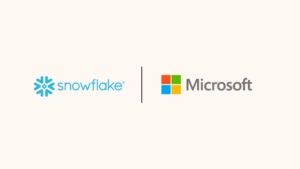
Build ISV apps with Microsoft Fabric: The open platform
In a constantly evolving digital landscape, independent software vendors (ISVs) and enterprise data-provider companies face the ongoing challenge of aligning with platforms that can amplify their potential platforms that promise flexibility, scalability, innovation, and growth. Microsoft Fabric combines the best of Microsoft Power BI, Azure Synapse Analytics, and Azure Data Factory to create a single, unified software as a service (SaaS) platform with seven core workloads. By creating a single platform with tools for every data professional in a unified experience and architecture, it can reduce the typical cost and effort of integrating analytics services and help simplify your data estate. Microsoft Fabric and its open platform is tailored for ISVs, setting the stage for organizations to integrate their solutions and services with Fabric and bring their experiences into Fabric. Fabric, now generally available, is part of the Microsoft Intelligent Data Platform, which includes a broad set of data, governance, and AI services.

Integrating ISV applications with Microsoft Fabric
We are excited to announce the paths for ISVs to integrate with Microsoft Fabric towards building a powerful ecosystem for all organizations. But before looking at these approaches, I want to share why organizations and ISVs should partner with us and build various levels of integrations with Fabric. The early momentum and feedback have been simply fantastic.
Microsoft Ignite 2023 ISV Session
Watch hereThree reasons to integrate with Microsoft Fabric
Unparalleled platform capabilities
At the heart of Microsoft Fabric is an open platform—with open formats, open interfaces and application programming interfaces (APIs), and in the future—open platform integration software development kits (SDKs). For ISVs, this means the ability to weave their applications into a broader ecosystem with ease. Microsoft Fabric’s open architecture is bolstered by a rich set of APIs bringing secure access to all the customer’s data in a seamless way, which is often challenging for ISVs to access. In addition, Fabric is AI-powered with AI infused at every layer that ISVs can leverage as well to enhance their customer experience.
Reach, scalability, and growth
Microsoft Fabric will allow ISVs to reach hundreds of thousands of organizations. Integrating with this platform will bring an undeniable advantage for ISVs to expand their market. Built as a horizontal platform, it guarantees a huge reach and discoverability, from niche sectors to broad markets effortlessly. And while scalability is a prime advantage, it doesn’t come at the cost of security. Microsoft Fabric brings robust governance and security, allowing your user base to grow, while still staying secure. In addition, ISVs can leverage their existing business model via the Azure Marketplace including pay as you go approaches.
A collaborative ecosystem
Beyond the technological facets, Microsoft Fabric thrives as a community. It’s not just a platform but a collaborative ecosystem. ISVs, upon joining the Fabric community, immerse themselves in a rich pool of innovators, developers, and tech enthusiasts. This networked environment stimulates knowledge exchange, fosters potential partnerships, and enables ISVs to always have a sounding board for their innovations.
The paths to integrating with Microsoft Fabric

There are three approaches that ISVs can leverage to enable seamless integration with Fabric.
- Inter-operate with Fabric: This is one of the easiest ways to leverage the power of the data that Fabric customers will store in OneLake. By enabling your application to work with OneLake in Fabric, using published APIs and SDKs, ISVs can make sure that their existing and new customers can have seamless experience with Fabric while using ISV applications. This approach is already being used by hundreds of ISVs.
- Develop Apps on Fabric: Organizations and application providers can embed Fabric as part of their solution offerings, enabling rapid application development and deployment—using Fabric’s platform security, identity, storage, and compute model.
- Build a Fabric workload: ISVs can provide a familiar look and feel of Fabric and make their applications discoverable from within the Fabric experience by extending Fabric’s capabilities through building a Fabric workload.
All ISVs can implement the first two approaches with Microsoft Fabric today. The third approach is still under development and is currently only accessible by invitation only.
Designing for the future
Microsoft Commercial Marketplace
Connect with customers at scaleWe are also excited to announce our collaboration with several industry-leading ISVs who have been demonstrating the possibilities of bringing their product experiences as workloads into Fabric, widening their reach and breadth of capabilities.

Microsoft and LSEG are collaborating to bring LSEG’s financial markets intelligence offerings into Fabric as first-class experiences to customers in the financial services industry and beyond. We are incredibly excited about this collaboration that will allow our joint customers to derive more value from LSEG’s high-value financial data and their unique data transformation capabilities.
“LSEG’s trusted financial markets intelligence natively integrated into Microsoft Fabric, will make data access, discovery and digital rights management easier and more cost effective for our customers. In collaboration with Microsoft, we are empowering our customers to focus on creating unique insights bringing the transformational power of Generative AI.”—Dmitri Sedov, Global Group Head, Data Intelligence.
For businesses relying on spatial analytics, Esri is helping transform decision-making with spatial insights that will be enabled directly within the Microsoft Fabric experience, powered by their ArcGIS service.
“Esri and Microsoft are reshaping how everyone works with data. Now data professionals will have direct access to core Esri capabilities inside of their Microsoft Fabric environment. We are pleased to advance our important work with Microsoft and see the power of spatial insights unlocked for our shared customers.”—Jack Dangermond, President of Esri.
Informatica is delivering its AI-powered Cloud Data Management solution as a unified experience with Microsoft Fabric, addressing customers’ critical data challenges to find, understand, govern, and trust data.
SAS Intelligent Decisioning engine integrated into Microsoft Fabric will drive real-time interactions, and define the next best actions at scale, providing unprecedented ability to automate decisions across the enterprise.
Teradata is delivering its AI Unlimited serverless AI/machine learning engine via Microsoft Fabric enabling customers to go beyond SQL and extract additional value from their data, all stored in an open format in OneLake.
The combination of mass distribution, instant access to the customer’s data estate, and a strong community is getting enthusiastic reactions from ISVs, serving the needs of customers across industry verticals and horizontals. We’d love for you to get familiar with and evaluate Microsoft Fabric as an open platform for your application.
Learn more about Microsoft Fabric
- Watch the ISV session at Microsoft Ignite 2023.
- Check out the pathways to integrate with Fabric.
- Nominate to Azure Innovate for comprehensive investments.
- Publish to the Commercial Marketplace.




